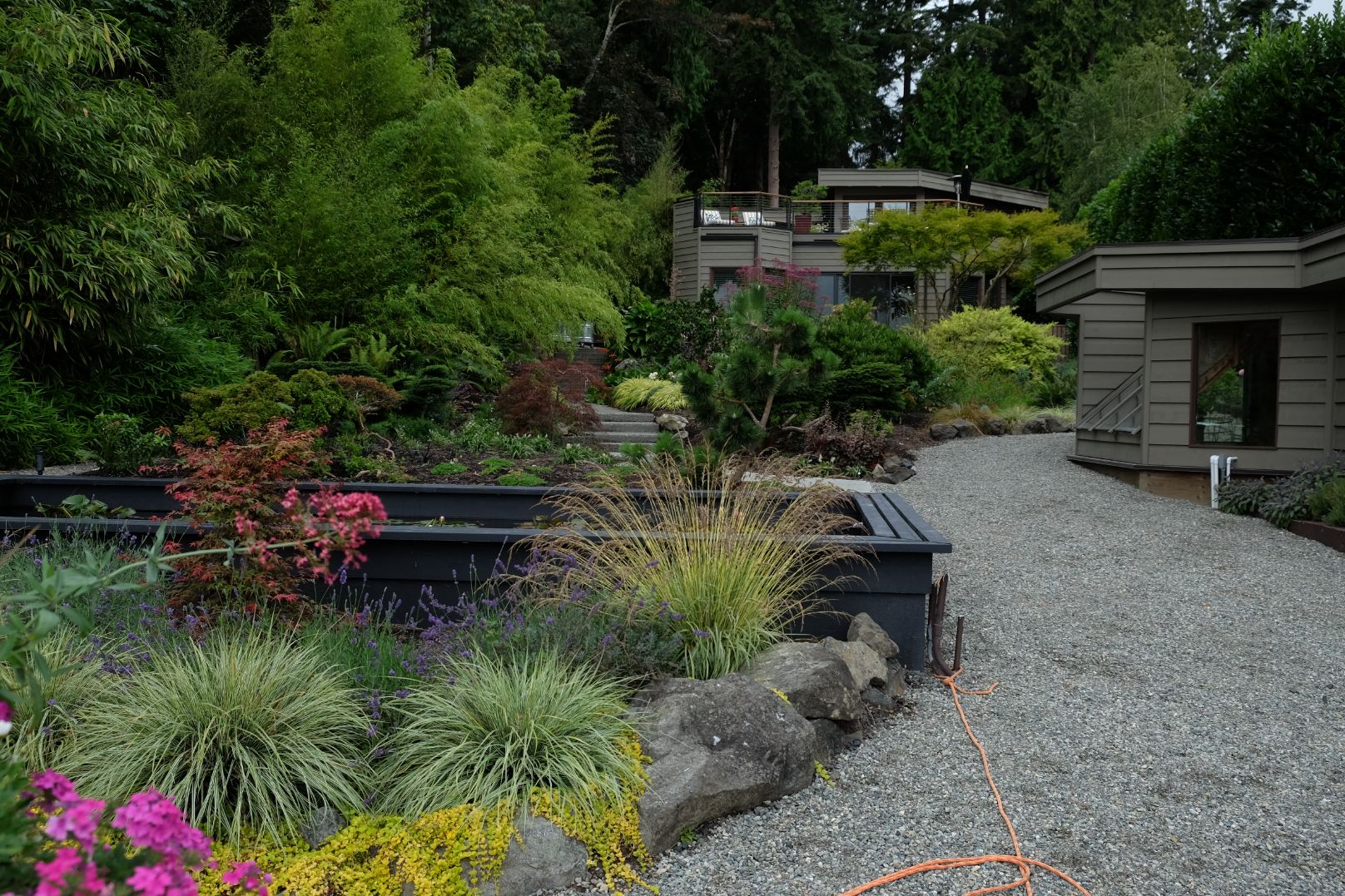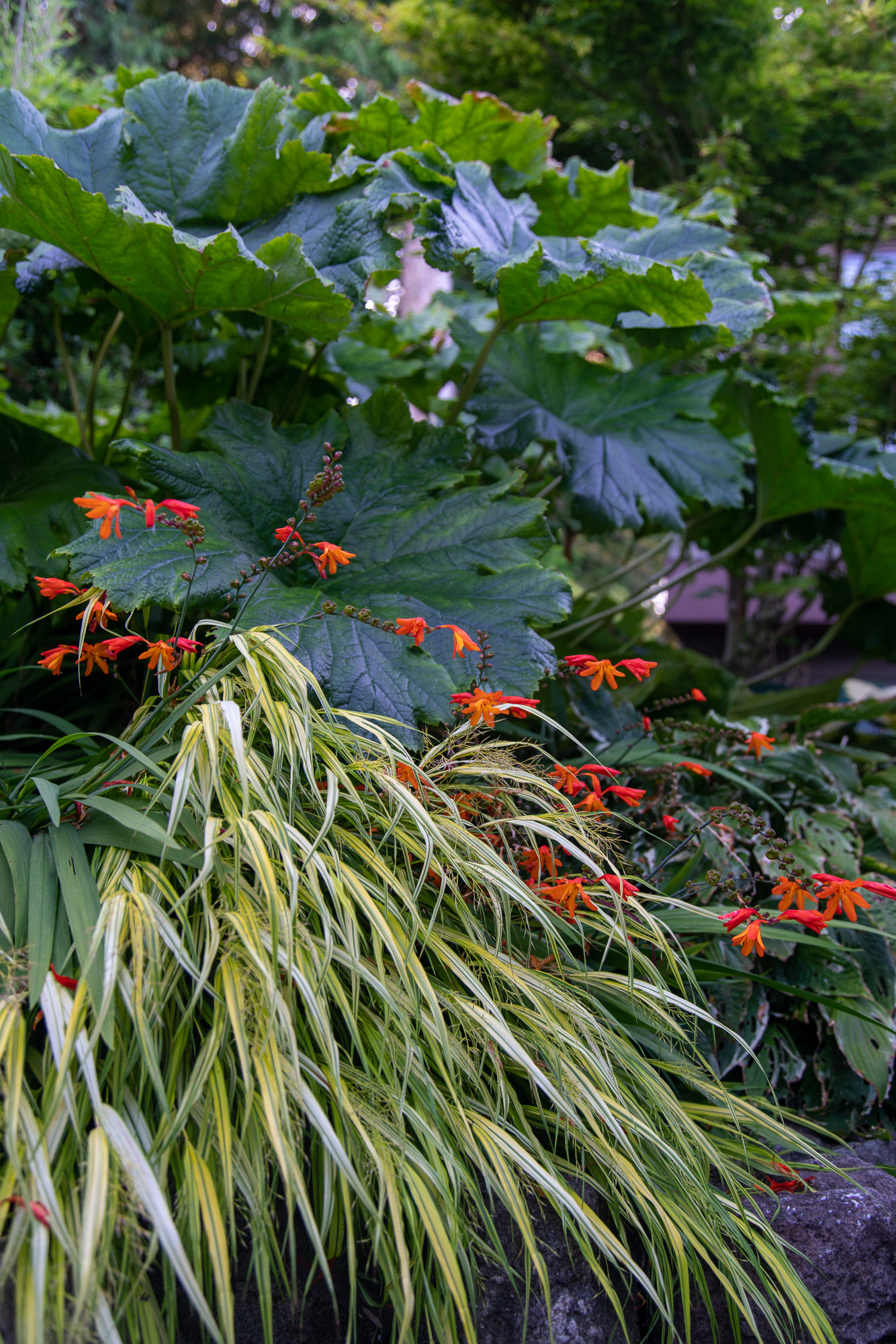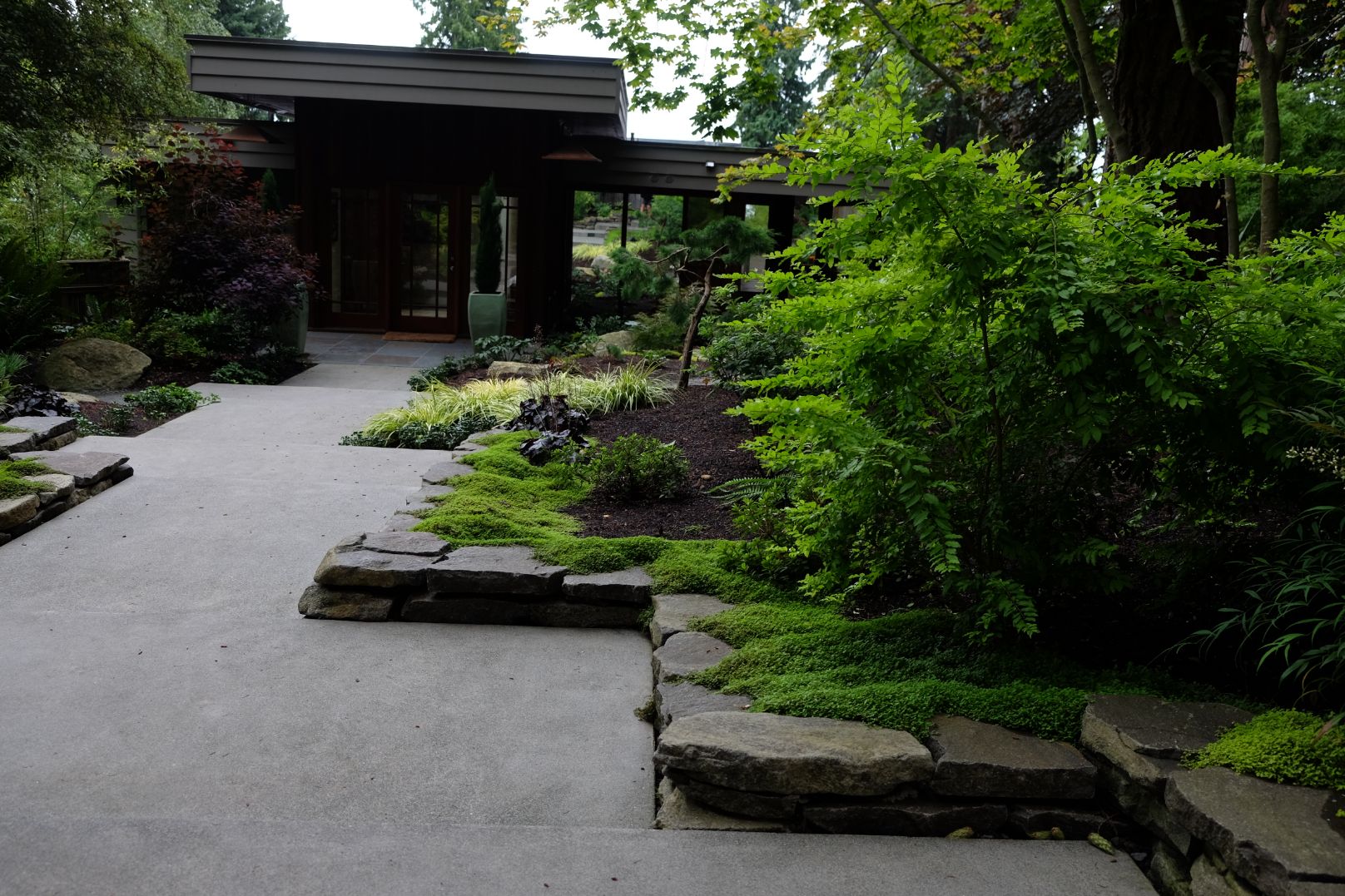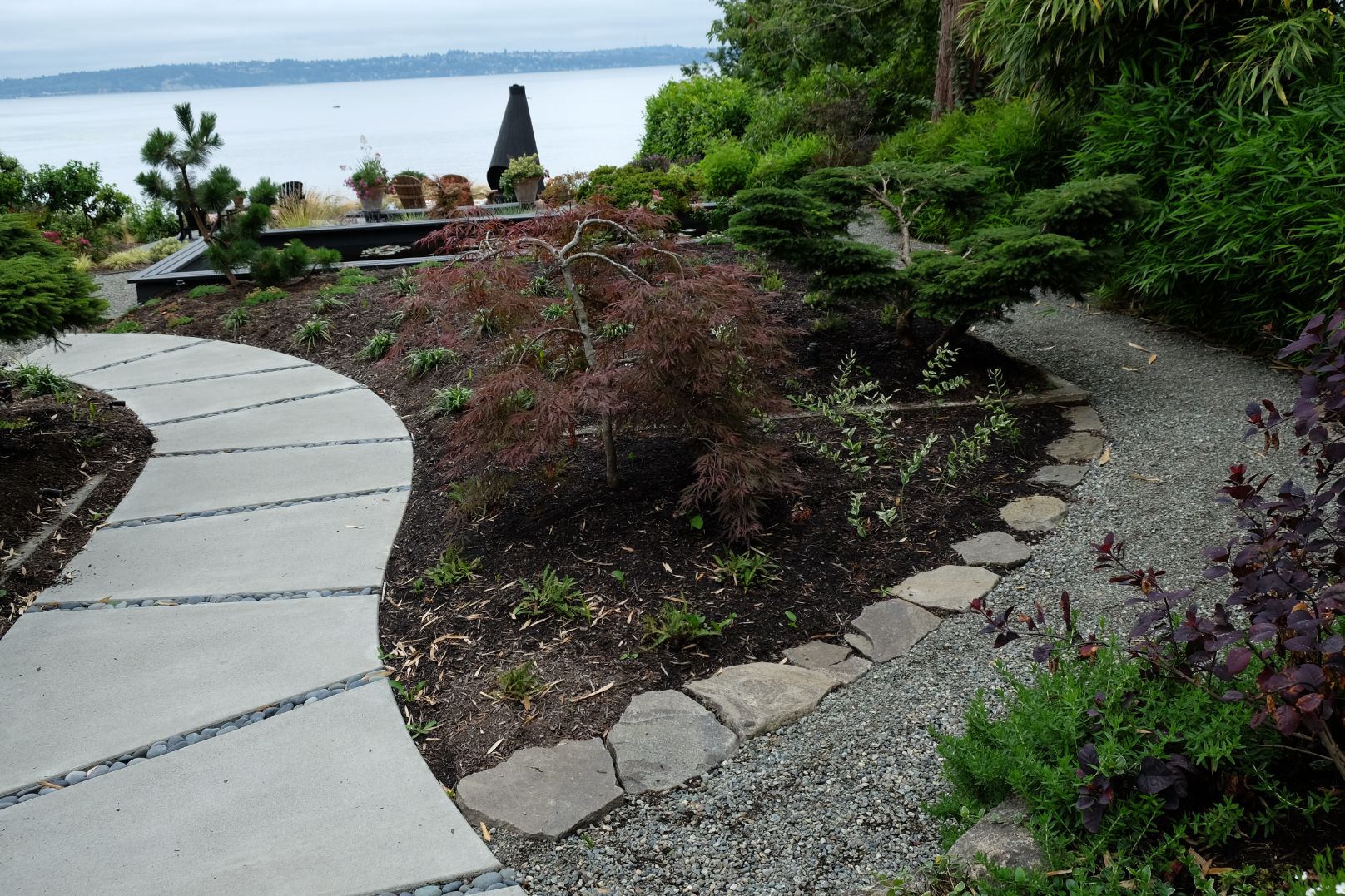Mid-Century Modern Garden Project
In the Shade of 20th Century Trees
After a sensitive remodel transformed this beautiful mid-century house, its owners refocused on the garden. Overgrown and shady, it nevertheless had splendid long views across Puget Sound to the Seattle skyline.
The house entry was the first challenge. A cluster of randomly placed vine maples (Acer circinatum) originally flanked the walkway to the home’s beautiful wood and glass porch; but the path itself was just a series of stepping stones in bark that headed straight for the door.

Before
We wanted to create a sense of wonder and exploration here, with firmer footing and lighting, but first we had to convince the owners to let us remove several old vine maples. The trees had been left to their own growth pattern for many years and were a mess of crossing trunks and branches. It was a hard sell, but we got the go-ahead. Choosing carefully, we thinned out the bent trunks and forged a balance between the long, sinuous maple trunks that remained and the large firs (Pseudotsuga menziesii) and cedars (Thuja plicata) that shared the space. That gave us dappled shade with strong light from the afternoon sun, and a wonderful contrast between the wispy vine maples and the taller trees’ sturdy, solid trunks.
The redesigned concrete walkway shifts between the trees, passing through the original bamboo fencing and slated gates. Lights now illuminate the step patterns and enhance the overall look of the space, but side paths and trees remain unlit to maintain one’s sense of walking through the forest. Natural stone along the path’s edges create room for more plants and soften the new look of the concrete walk. We mulched around existing trees to promote more viable, breathable soil, and reverse damage caused by compaction.
Plants were chosen with several requirements in mind, including active dog play. Much of the garden’s appeal comes from a multi-layered, beautifully textured plant palette, mostly in light greens. Anchored by a good percentage of evergreens, they supply strong seasonal interest under the Northwest’s gray skies. In choosing them, we considered leaf color, bloom, and even the peak-season timing of perennials.
Many plants were cultivars of natives that are well adapted to life in a root packed, acid environment. For ground covers, nonnative Japanese spurge (Pachysandra terminalis), Acorus, Mukdenia rossii ‘Crimson Fans’, baby tears (Soleirolia soleirolii), and creeping thyme (Thymus serpyllum ‘Minus’) fill the crevices in the edging rocks.


Choosing a tapestry of wonderful plants is one thing, but making them dog friendly is another. Japanese forest grass (Hakonechloa macra ‘Aureola’) proved to be such a treat for the family’s Labrador retrievers that it had to be replaced with a similar grass (Acorus gramineus ‘Variegatus’) that they wouldn’t eat.
The owners’ love of conifers and Japanese maples (Acer palmatum) shows up throughout the property. Some of these had to be transplanted to new locations, but many mature specimens were left and new sections of garden were planted around them.
The eastern section is a different garden altogether. Though still shaded by large conifers, it has more exuberance, and embraces the light and openness of the site’s expansive view. The Japanese maples and conifers that grow here are surrounded by lush perennials in the summer. Joe Pye weed (Eupatorium purpureum), artichoke (Cynara cardunculus), calla lily (Zantedeschia aethiopica), Crocosmia, Anemone, meadow rue (Thalictrum), and ornamental sages (Salvia) tumble in abandon over bird’s nest spruce (Picea abies ‘Nidiformis’), mugo pine (Pinus mugo mugo), Japanese plum yew (Cephalotaxus harringtonia ‘Korean Gold’), and English yew (Taxus baccata).


A fun, curved concrete walkway creviced with black Mexican beach pebbles connects an existing pathway with the waterside sitting area. To get there, it winds among a sturdy mature ‘Thunderhead’ pine (Pinus thunbergii), a cloud-pruned spruce (Picea nidiformus) and a Japanese maple. Black mondo grass (Ophiopogon planiscapus ‘nigrescens’), Little Hard Fern Blechnum penna-marina, and Crystal Falls lily turf (Liriope jaburan) blend into a shady mosaic that softens the transition between concrete walkway and the rest of the garden.
The last piece of the puzzle was an existing raised, rectangular pond. It didn’t add much to the landscape until it was cleaned out and planted with waterlilies (Nymphaea), using just an aerator for circulation. It was enough: frogs, dragonflies, and water skimmers quickly moved in, making the pond and garden a more diverse place than ever.





